Extraordinary historic photos capture America's role in the Second World War
America at war
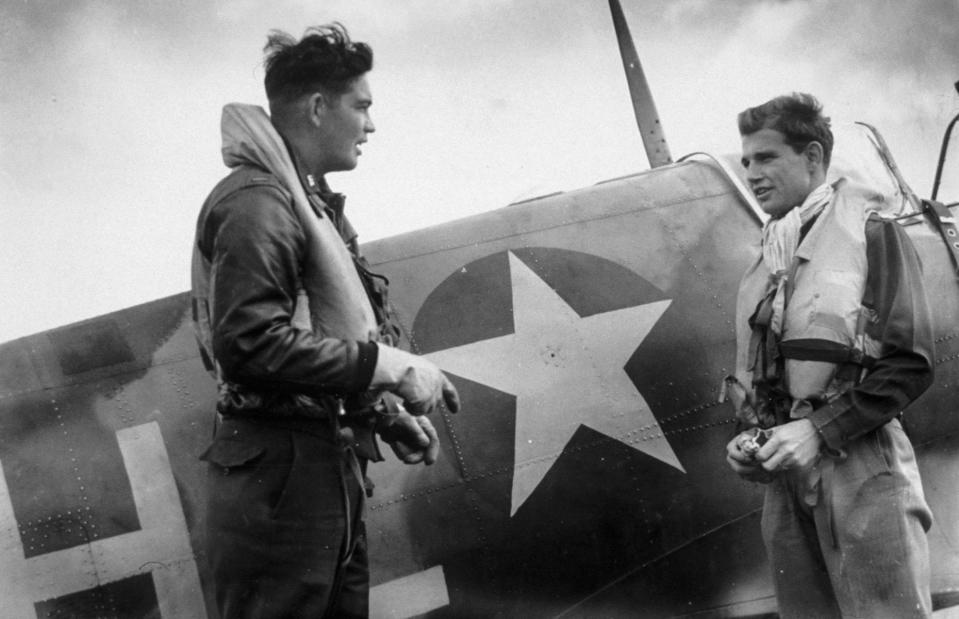
Keystone/Getty Images
After the horrors of the First World War, the United States was understandably reluctant to enter another global conflict. But as the Nazis raced across Europe and Japan attacked Pearl Harbor, the US finally declared war in 1941, sending much-needed equipment and brave servicemen across the Atlantic and eventually turning the tide in this devestating conflict.
Read on to see how America helped shape the Second World War – at home and on frontlines across the globe…
c.1940: American isolationism
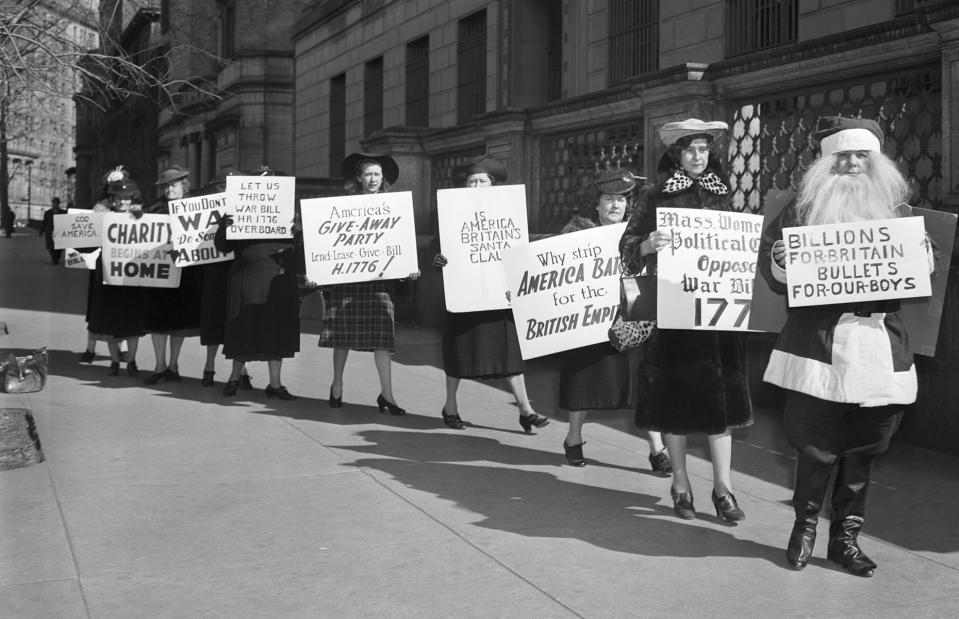
Bettmann via Getty Images
As Hitler and the Nazi Party began creating trouble in Europe through the 1930s, America’s first instinct was to stay out of it. The country had lost around 117,000 men in the First World War, and the public mood was that no more young Americans should die in battles on foreign fields. The country’s dogged isolationism can be seen on the placards waved by the Massachusetts Women's Political Clubs in this protest outside the Department of the Treasury building around 1940.
c.1940: Cash and Carry
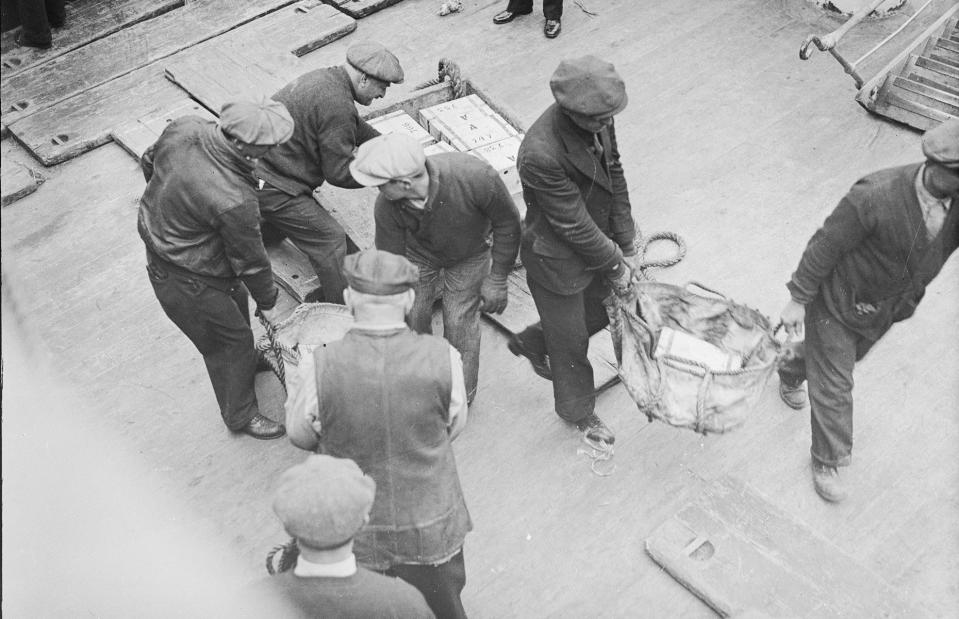
Bettmann via Getty Images
When America’s closest allies, Britain and France, declared war on Nazi Germany in 1939, the US remained steadfastly neutral. President Franklin D Roosevelt wanted to provide immediate assistance, but he was hamstrung by the so-called Neutrality Acts that explicitly banned supplying money, munitions and equipment to foreign powers. Through a series of sly political manoeuvres, FDR devised ways for America to contribute, including a 'Cash and Carry' scheme through which foreign governments could buy American-made munitions and planes as long as they paid in cash (or gold, as seen here) and used their own ships to transport them.
c.1940: Fudging the rules to save Europe

Courtesy of the Historical Society of North Dakota
The FDR administration came up with all sorts of ingenious ways of getting around the Neutrality Acts. Under their terms war planes could not be flown out of the United States for sale to foreign governments. So the administration simply parked the planes within a hundred metres of the Canadian border and watched as the Canadians towed the planes into their country using ropes and horses, as seen here in Pembina in North Dakota.
1940: War in Europe still just a game

Bettmann via Getty Images
Americans were well aware of what was happening in Europe, but retained a sense of detachment. October 1940 saw the debut of a new type of slot machine which recreated the real-life aerial battles happening over London and Berlin. For just a nickel, Americans, like the New Yorkers seen here, got three hundred ‘bullets’ to fire at enemy aircraft, with planes turning fiery red if hit.
1941: Dr Seuss rings the alarm

GRANGER - Historical Picture Archive/Alamy
President Roosevelt was not the only person aware of the dangers of isolationism. In 1941, children’s author Theodor Seuss Geisel – better known as Dr Seuss – released a series of cartoons warning of the dangers posed by America’s stance. With France already overrun and Britain being pounded nightly by German bombers, a Nazi victory seemed all but inevitable. And with Europe conquered, this cartoon suggests, perhaps the US would be next in the crosshairs.
1941: Attack on Pearl Harbor changes everything
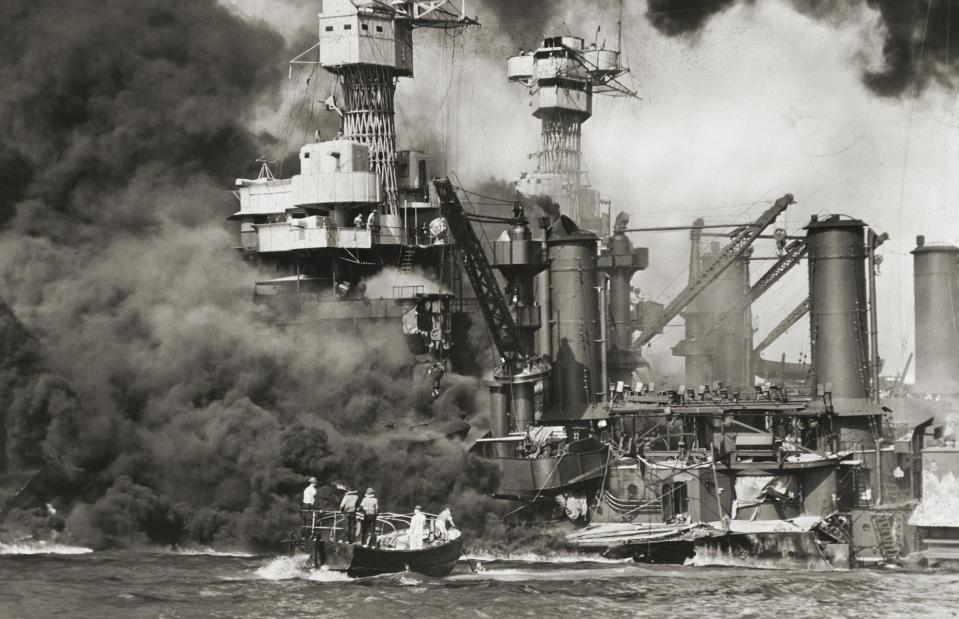
Bettmann Archive/Getty Images
America's hopes of staying neutral were shattered on 7 December 1941 when the Japanese attacked Pearl Harbor in Hawaii. Increasingly desperate for oil, Japan hoped that the attack would destroy the Pacific Fleet and see America retreat further into isolationism. Instead, a sleeping giant was woken. The US declared war on Japan the next day. In response, Germany and Italy declared war on the US on 11 December and the country was again at war in Europe, whether it liked it or not.
1941: A massive mobilisation begins

Bettmann Archive/Getty Images
Isolationism had left the US ill-equipped to fight formidable adversaries across two distant and very different fronts. America needed to raise, train and outfit a vast military force – and quickly. Roosevelt had pre-emptively ordered America's first ever peacetime military draft in September 1940, which saw the armed forces reinforced with 'citizen soldiers' drawn from every corner of the country. By December 1941, just months after this photo of trainees in Fort Jackson in South Carolina was taken, America's military had grown to nearly 2.2 million soldiers, sailors and airmen.
1941: Boxer Gene Tunney trains sailors
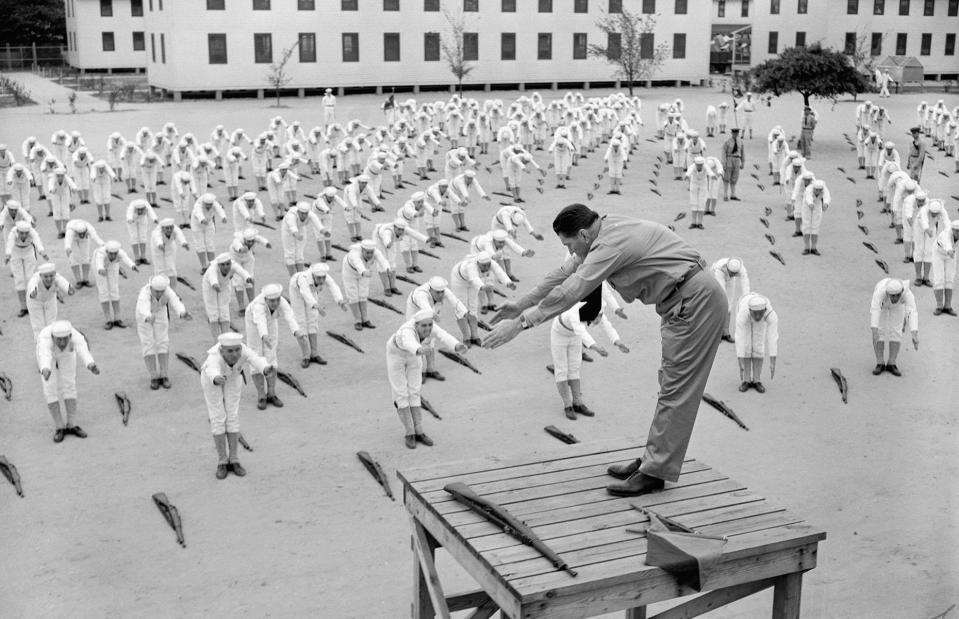
Bettmann Archive/Getty Images
Upon arriving at the training camps, inductees were quickly stripped of many of their freedoms. They were given identical haircuts and uniforms, assigned to barracks that were basic to say the least and put through tough physical training. Everyone was expected to do their bit, including former world heavyweight boxing champion Gene Tunney, seen here conducting an exercise training session for a large group of sailors in 1941.
1941: Switching to a war economy
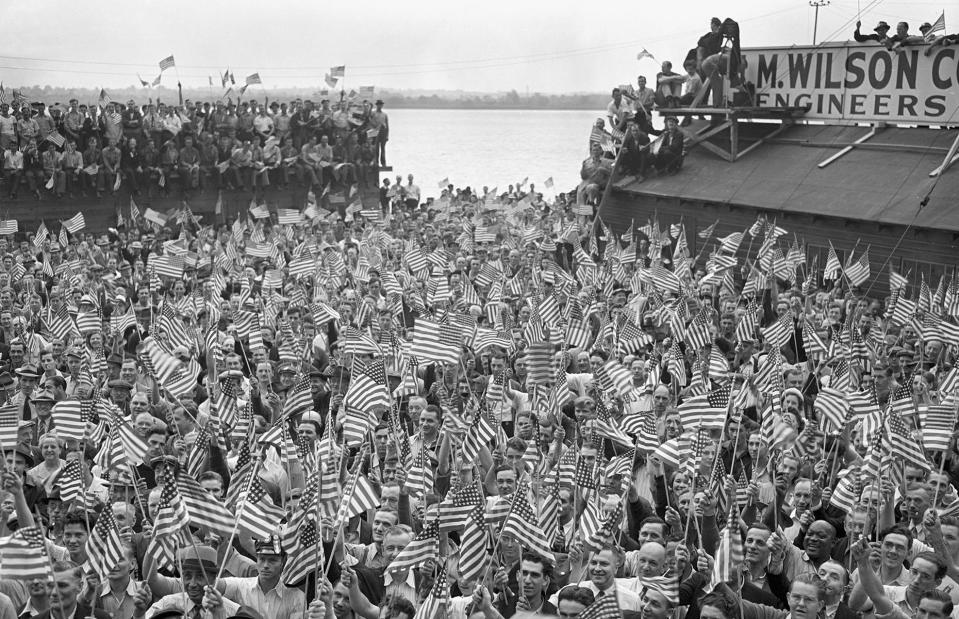
Bettmann Archive/Getty Images
Raising an army was just part of America's war effort. That same army had to be supplied with the uniforms, weapons and equipment it needed to fight. The US had to convert to a war economy – a process evident in this photo of employees at the Disston Saw Works in Tacony celebrating their factory becoming the Philadelphia Armor Plate Plant. The factory had been making saws on the site since 1872, and quickly pivoted to manufacturing metal plates for American tanks.
1941: Women take over the workplace
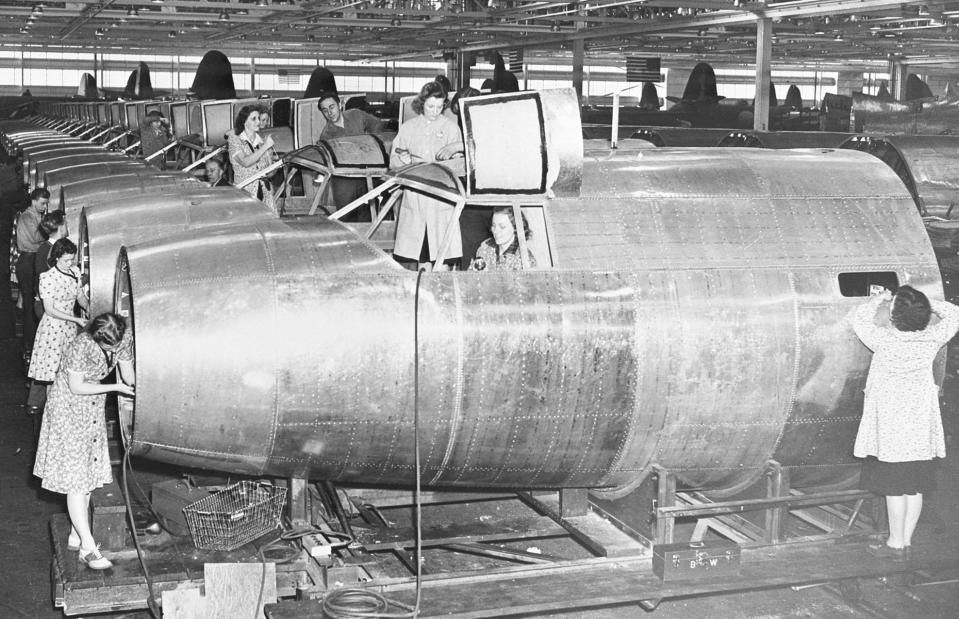
Bettmann Archive/Getty Images
The war effort brought sweeping changes to American life, and with able-bodied men joining the forces in droves the need for labour opened up opportunities for women. Before the war women had worked mainly as secretaries, clerks and receptionists. Now they were driving trucks, working in construction and assembling munitions, planes, trains and ships. An estimated six million women began working in fields that were previously off-limits. In the aircraft industry alone (pictured), women soon made up 65% of all employees.
c.1942: Americans start scrapping

Hulton Archive/Getty Images
As the need for steel and other resources increased, American citizens were asked to scour their yards and basements for spare metal that could be used to build the machines needed to win the war. Items of every sort were collected, from pots and pans to farm equipment, and even Civil War-era cannons were melted down for the war effort. Organised 'scrap drives' became huge community events, with bands, speeches and games.
1942: Movie stars pitch in

CORBIS/Corbis via Getty Images
Hollywood stars did their bit for the war effort too. Car owners were asked to donate their bumpers for the scrap drive and here we see legendary actress Rita Hayworth happily donating hers. Fortunately drivers were also being asked to drive at slower speeds to preserve rubber – 35 miles per hour (56km/h), known as 'victory speed' – so in theory collisions should have had less impact.
c.1942: The rise of the 'victory garden'
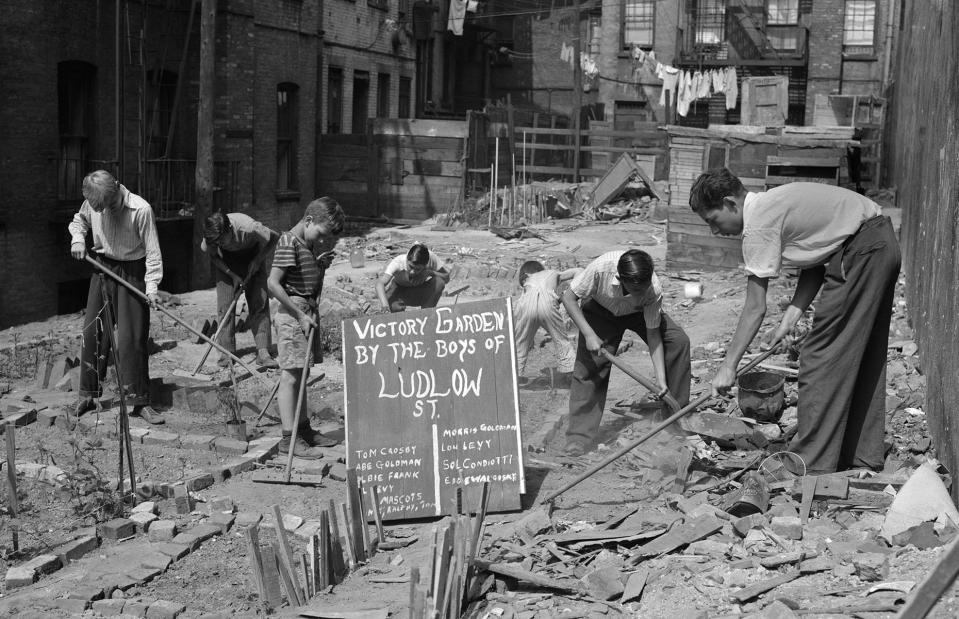
Charles Phelps Cushing/ClassicStock/Getty Images
1942 also saw the launch of the ‘Food for Victory’ campaign, which urged people to grow their own fruit and vegetables as a patriotic duty. Any scrap of land – arable or otherwise – was soon pressed into service, as we can see from this 'victory garden' created by boys in Manhattan's Lower East Side. In 1942 around 15 million families planted victory gardens, and that number grew to 20 million in 1944. In that year these gardens produced roughly eight million tonnes of food – 40% of all the fresh fruits and vegetables consumed nationwide.
c.1942: War bonds issued to finance the war
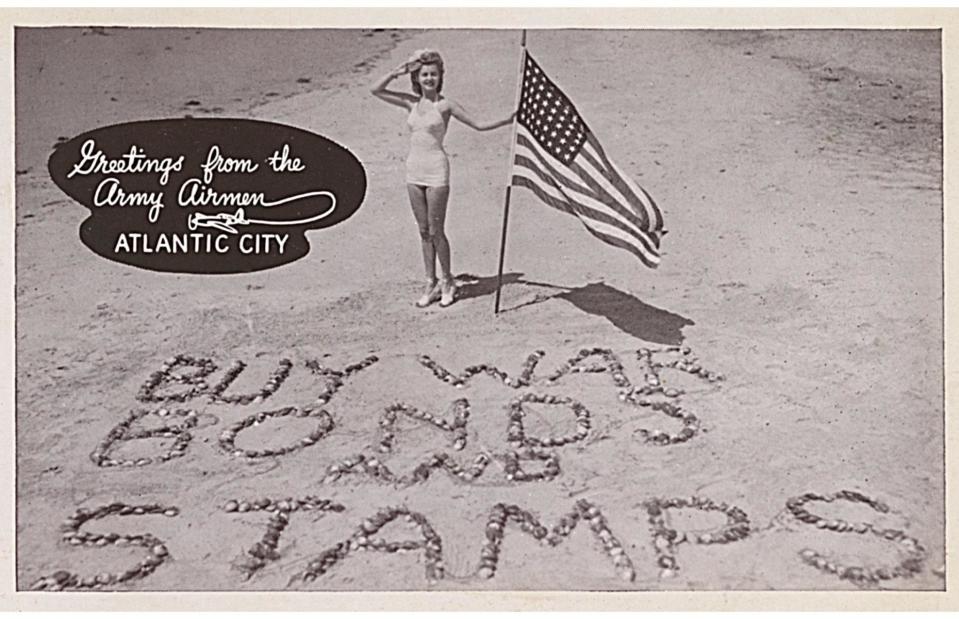
Chronicle/Alamy
All told the United States spent more than $300 billion fighting the war – the equivalent of $4 trillion today. To help fund this extremely expensive enterprise, the government issued war bonds and suggested to its citizens that it was their patriotic duty to buy them. A $25 war bond cost $18.75, representing a $6.25 profit over 10 years. Celebrities like Bob Hope, Frank Sinatra, Marlene Dietrich and Bette Davis travelled the country promoting them to adults while Superman, Batman and Bugs Bunny hustled kids for their pocket money in comic books.
1942: Japanese internment camps
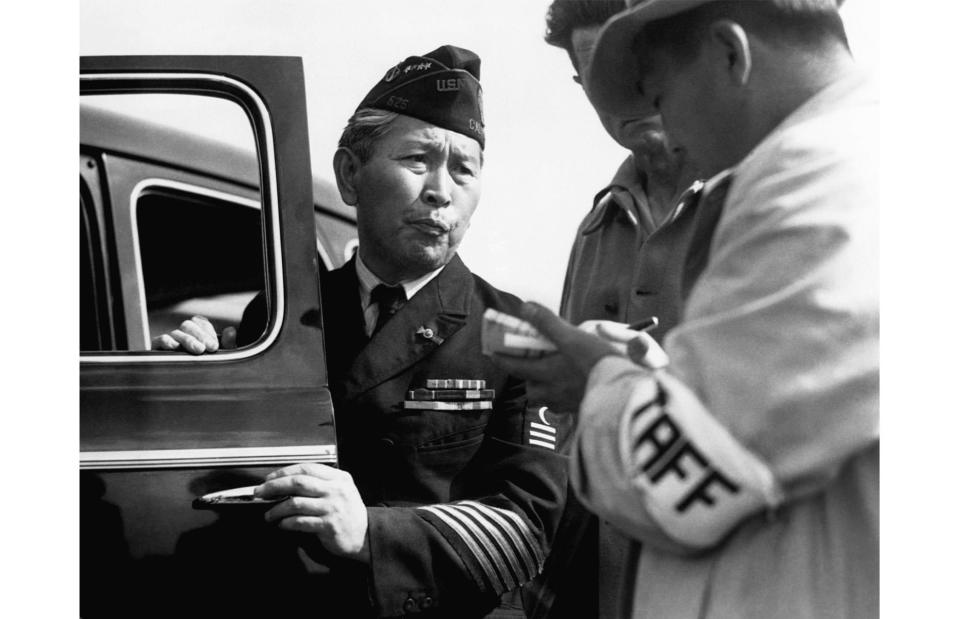
Clem Albers/CORBIS via Getty Images
There was a dark side to the patriotic fervour that swept the country. In 1942 President Roosevelt signed an executive order to create Japanese internment camps. This order saw anyone with one sixteenth Japanese ancestry or more forcibly removed from their homes and placed in remote camps in Montana, New Mexico and North Dakota. The order affected around 120,000 people – most of whom were US citizens. This Japanese-American man made that point by wearing the uniform he'd served his country in during the First World War.
1942: Rights violations

U.S. Army Signal Corps/Library of Congress/Corbis/VCG via Getty Images
The incarceration of Japanese-Americans is considered one of the most shocking violations of American civil rights in the 20th century, and more than 17,000 of those rounded up were children under 10. Several thousand more were elderly or disabled. Before being sent to the camps they were kept in assembly centres, most of which were not designed for human habitation. They were converted fairgrounds, stables, racetracks and cow sheds. Here we see two Japanese-American children at the Pinedale Assembly Center in California, waiting to be relocated.
c.1942: The best equipped soldiers in the world
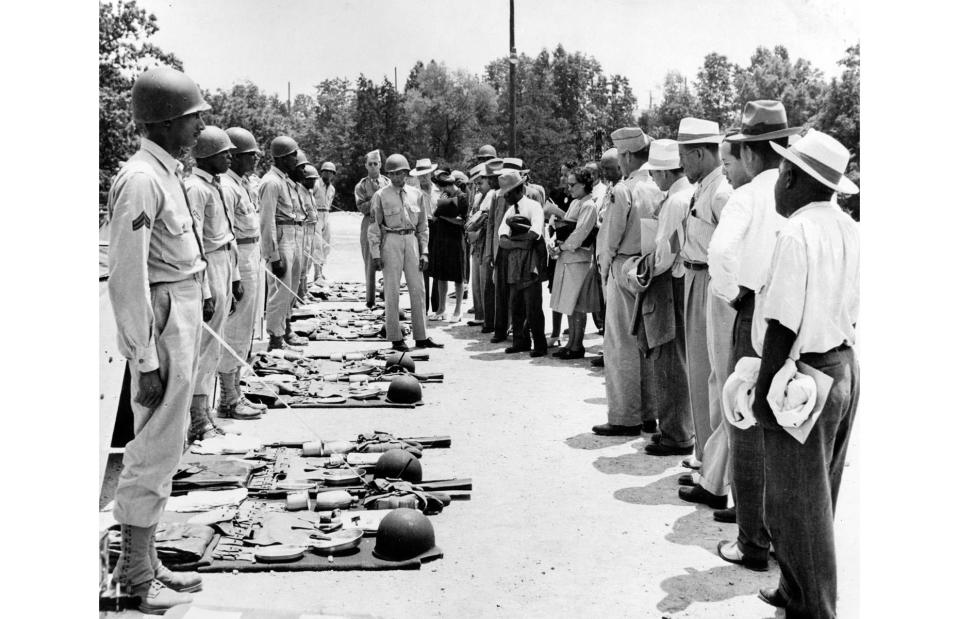
Afro American Newspapers/Gado/Getty Images
Sacrifices back home meant that when American soldiers reached the battlefields of Europe and Asia they were among the best-supplied and best-equipped troops the world had ever seen. America’s allies benefited too, mainly through a lend-lease programme that saw one billion dollars' worth of supplies being sent to Britain and other allies every month in 1943. In the skies over Europe, for example, the British RAF was using American-made bombers and fighters powered by gasoline also procured under lend-lease.
1942: US pilots fly to Europe's defence
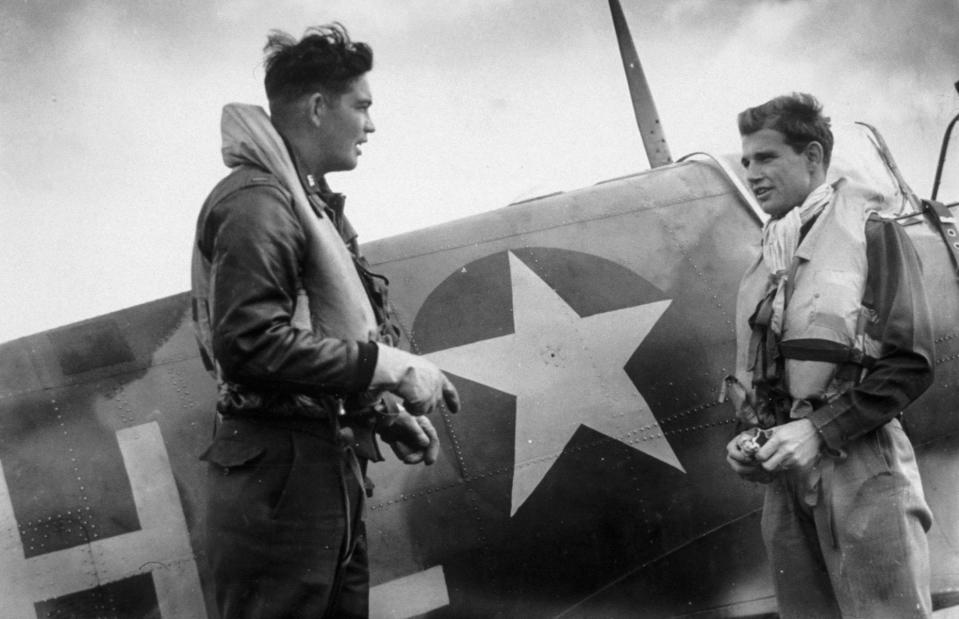
Keystone/Getty Images
Shortly after the US entered the war, British Prime Minister Winston Churchill sailed to America and spent Christmas with President Roosevelt. With German planes bombing London at will it was agreed that Hitler was a greater danger than Japan and that America would make Europe its first priority. To that end, the US sent vast fleets of aircraft to help the Allies regain control over the skies above Europe, and set about weakening the German war machine. Here we see two American pilots in 1942 about to take part in a raid over Dieppe in France.
1942: Masters of the air

Central Press/Getty Images
Over the course of the war more than two million American servicemen passed through Britain, and up to half a million of them were in the air force. Over 200 airfields were occupied or newly-built by US forces in what was dubbed a 'friendly invasion' – captured in the recent Apple TV series Masters of the Air. The series follows the crew of the 100th Bomb Group conducting raids over Germany in B-17 Flying Fortress planes, just like this real-life US bomber crew pictured at an English airfield sometime in 1942.
1942: Harsh realities bring social change
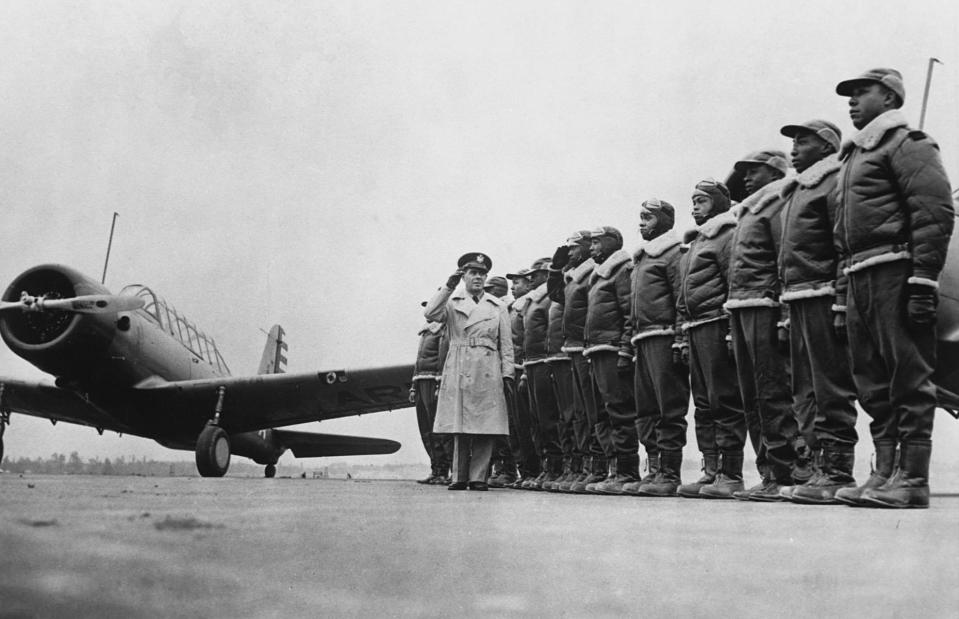
Corbis via Getty Images
Conquering the skies came at a heavy cost. In the British army 51% of aircrew were killed on operations during the course of the war, while 12% were killed or wounded in non-operational accidents and 13% were taken prisoner. Only 24% emerged unscathed. The US army allayed high casualty rates by accepting and training recruits who might otherwise have been overlooked, like these African-American cadets being saluted by an officer in 1942. Known as the Tuskegee Airmen, 932 graduated and 355 saw active duty, with great success.
c.1942: Clark Gable returns from a mission over France
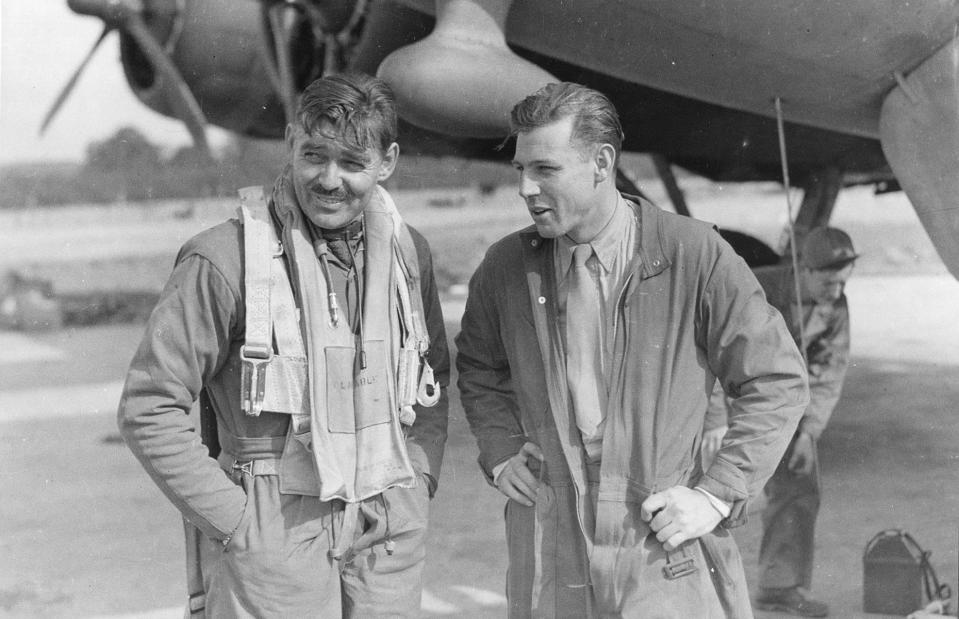
US Army/PhotoQuest/Getty Images
One of the most famous American airmen during the Second World War was Clark Gable, better known for his role as Rhett Butler in 1939's Gone with the Wind. He initially helped the war effort by promoting war bonds, but then trained as an aerial gunner and photographer and joined the 351st Bombardment Group stationed at Polebrook. He flew at least five missions as a captain and was awarded the Air Medal for his service. Adolf Hitler is said to have offered a $5,000 reward for his capture.
1942: Blunting Japanese ambitions in the Pacific
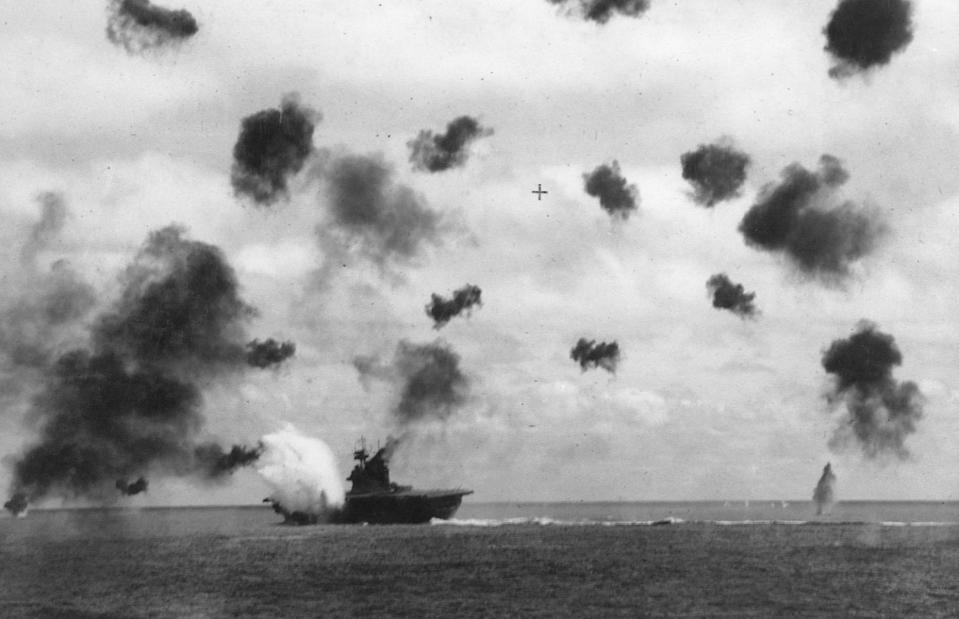
Corbis via Getty Images
Meanwhile, in Asia, it was the US Navy that was turning the tide of war against Japan. Despite the damage done by the attack at Pearl Harbor the US Pacific Fleet was still able to blunt Japan’s plans. At the Battle of the Coral Sea in May 1942 the US Navy halted a Japanese offensive for the first time. Then, the following month, the US won a stunning victory over the Japanese navy at the Battle of Midway (pictured), destroying four aircraft carriers.
1943: The counterattack begins
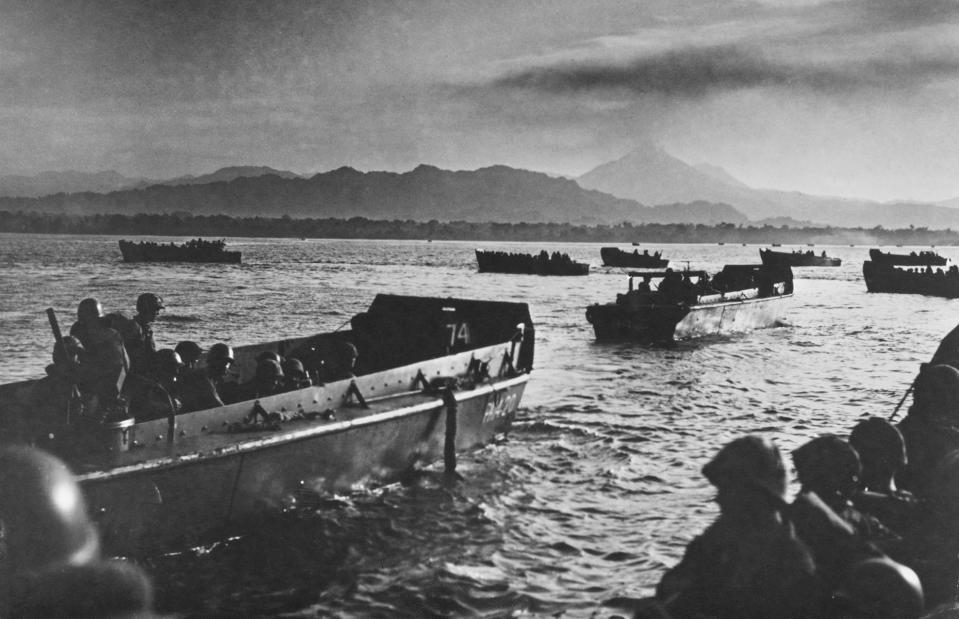
Keystone/Hulton Archive/Getty Images
The Battle of Midway was the first major US victory against Japan and marked a turning point in the war. It allowed US forces to go on the offensive for the first time and a long counterattack across the Pacific began. Amphibious attacks using cutting-edge landing craft built by Higgins Industries in New Orleans became the hallmark of the campaign. In this photo Landing Craft Vehicle Personnel (LCVP) of the 3rd Marine Division head towards Empress Augusta Bay on Bougainville Island in 1943.
1943: Island hopping across the Pacific
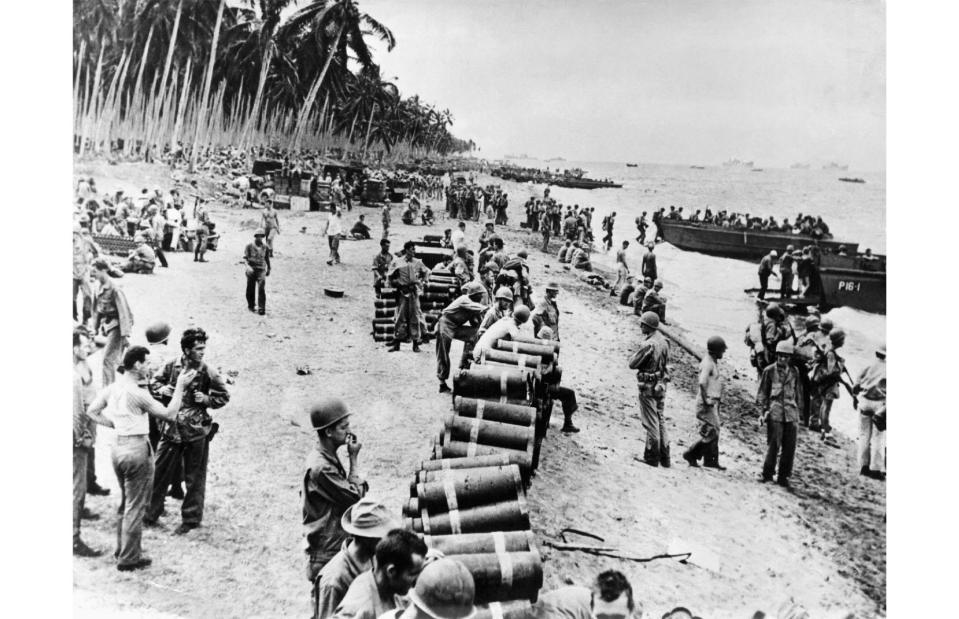
Hulton-Deutsch Collection/Corbis via Getty Images
Retaking the islands of the Pacific was not an easy task. Many were heavily defended by the Japanese who proved fierce and resolute adversaries. US military planners hatched an ingenious plan that saw American troops skip over heavily fortified islands in order to seize lightly defended locations that could support the next advance. Known as island hopping, this strategy left Japanese strongholds isolated and harried by starvation and disease.
1943: Meanwhile, in Tennessee...

Galerie Bilderwelt/Getty Images
In Tennessee locals were being warned to stay away from isolated farmland near Oak Ridge (pictured). The land had been mysteriously commandeered by the army, along with another site in Los Alamos, New Mexico. It was all part of a top-secret mission to build atomic weapons codenamed the Manhattan Project. It was so secretive that scientists worked on specific aspects of the project on each site without knowing how they fitted into the bigger picture. In Oak Ridge they built an X-10 Graphite Reactor to extract plutonium from enriched uranium.
1944: The Allies storm Normandy
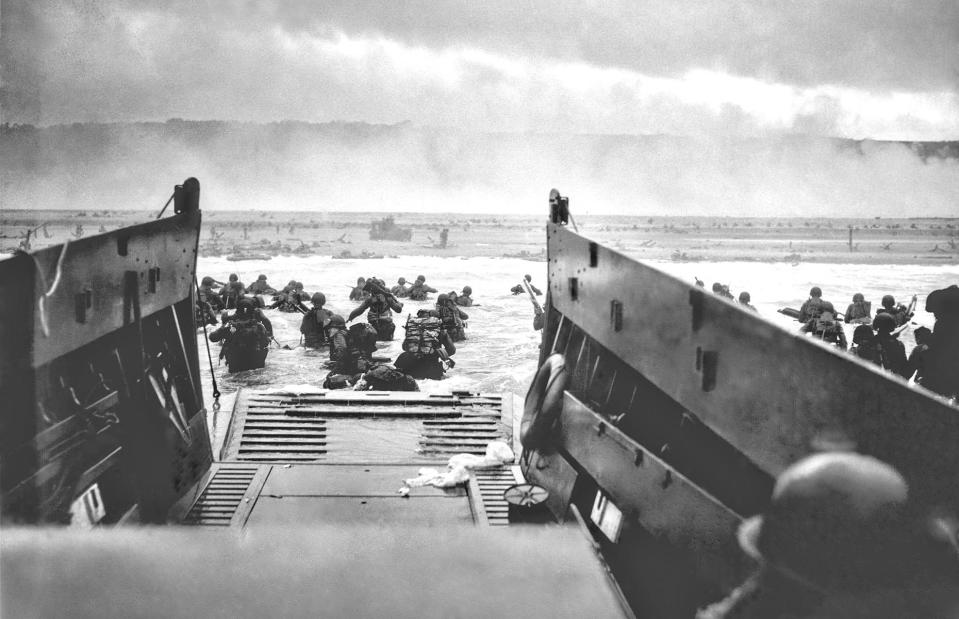
US National Archives/Alamy
The invasion of Normandy launched on 6 June 1944 was the largest amphibious invasion in history. Code named Operation Overlord, but now known simply as D-Day, the operation was commanded by US General Dwight Eisenhower, with much of the equipment supplied by factories back in the States. 4,414 Allied troops lost their lives that day, including 2,501 US servicemen, but the liberation of Europe had begun. Within a year Allied forces were approaching Berlin, and the Nazis were soon defeated.
1945: The destroyer of worlds is born
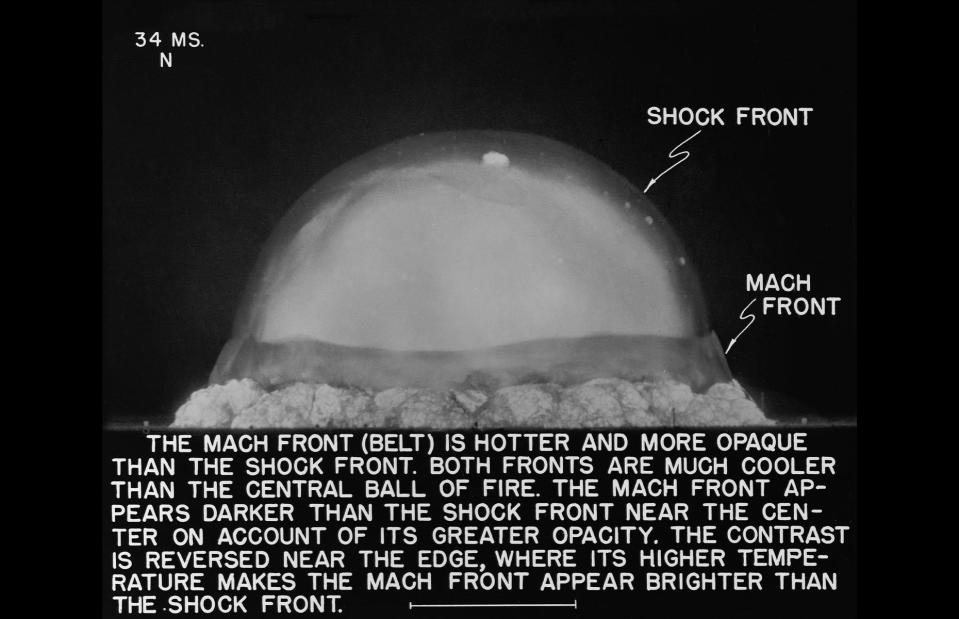
Corbis via Getty Images
At 5:30am on 16 July 1945, scientists in Los Alamos detonated the world’s first atomic bomb. The blast from the plutonium bomb was equivalent to roughly 21,000 tonnes of TNT and decimated the steel tower it rested on. This photo, taken at the moment of detonation, shows the waves of energy emanating from the bomb's core. The terrifying sight prompted project leader J Robert Oppenheimer to recall the Hindu scripture, Bhagavad Gita – "Now I am become Death, the destroyer of worlds."
1945: Atomic bomb unleashed on Japan
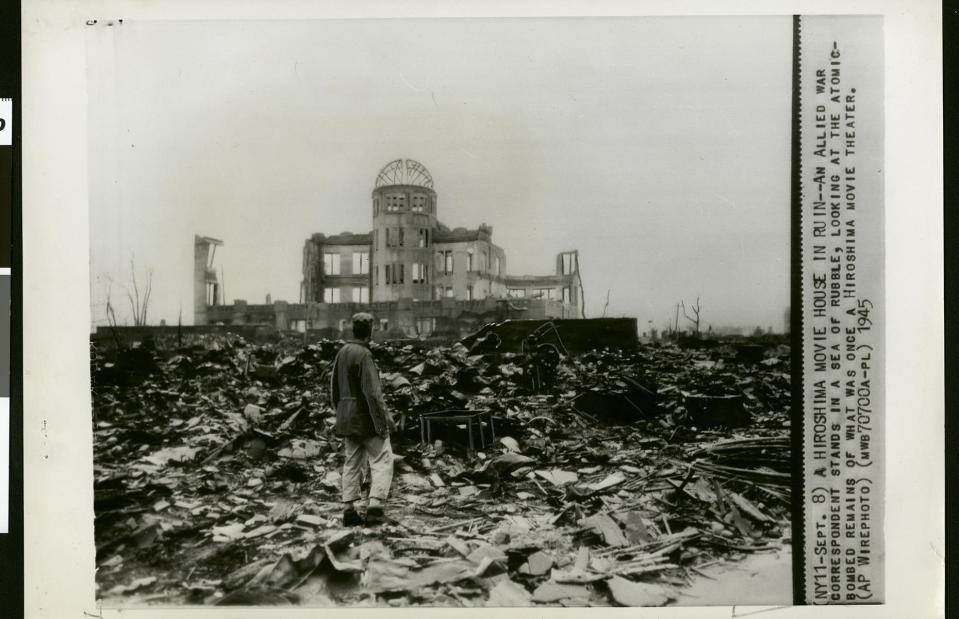
Los Angeles Examiner/USC Libraries/Corbis via Getty Images
Barely three weeks later, on 6 August 1945, Oppenheimer’s quote rang true when the world’s first atomic bomb to be deployed in war was dropped on Hiroshima. An estimated 80,000 people were killed instantly, with tens of thousands more dying later from radiation. Here we see an American war correspondent picking through the rubble of the city a while after the bombing. Three days later another atomic bomb was dropped on Nagasaki, killing another 40,000 people. On 15 August Emperor Hirohito announced Japan’s unconditional surrender.
1945: Victory on American terms
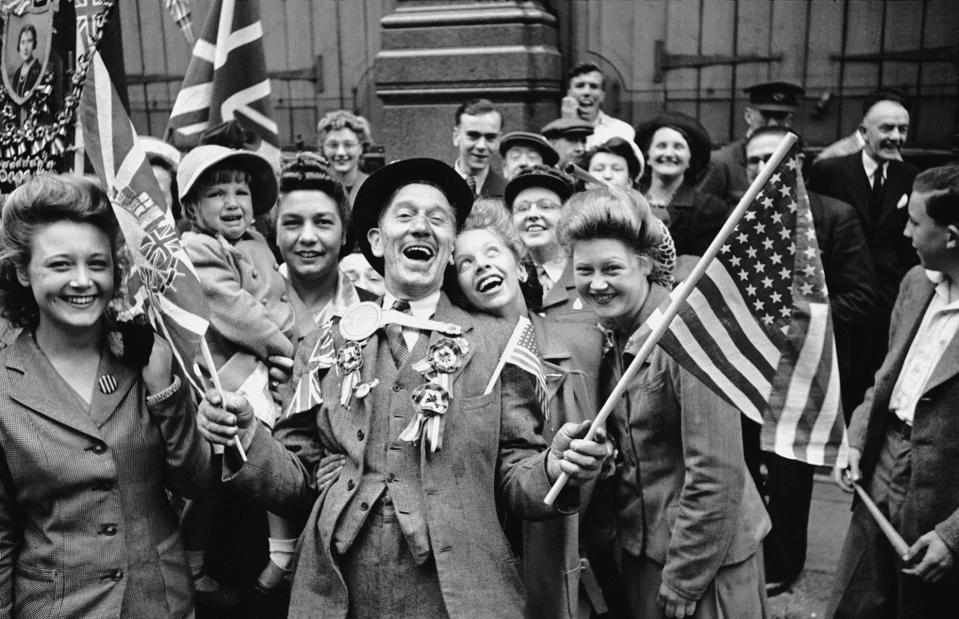
Picture Post/Hulton Archive/Getty Images
War in Europe and Asia was now over, sparking huge celebrations in many parts of the world, but especially in London (pictured) and New York. There was no doubt in the minds of these revellers about the important role the US played during the war, and it was the same for the leaders of America's allies, including Soviet premier Joseph Stalin. He raised a toast to the US at the Tehran conference in 1943 thanking them for their contributions. "Without the machines we received [from the US]," he said, "we would have lost the war."
1946: Still shaping the post-war world
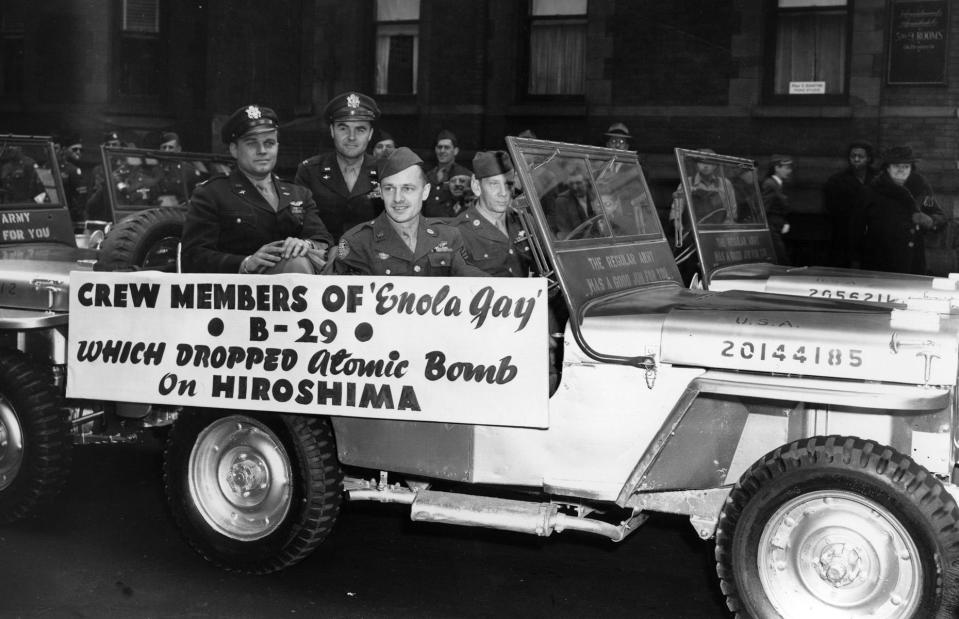
Keystone/Getty Images
America’s decision to develop – and use – an atomic bomb not only shaped the end of the war but the post-war world too. Nuclear armament quickly became a priority for countries that could afford it, fuelling the tense, decades-long Cold War stand-off between the US and the Soviet Union. When the bomb over Hiroshima went off, Captain Robert A Lewis, co-pilot of the bomber that dropped it, wrote in his log: "My God, what have we done?" It is a question still being asked today.
Now discover an incredible selection of colour photos from the Second World War


